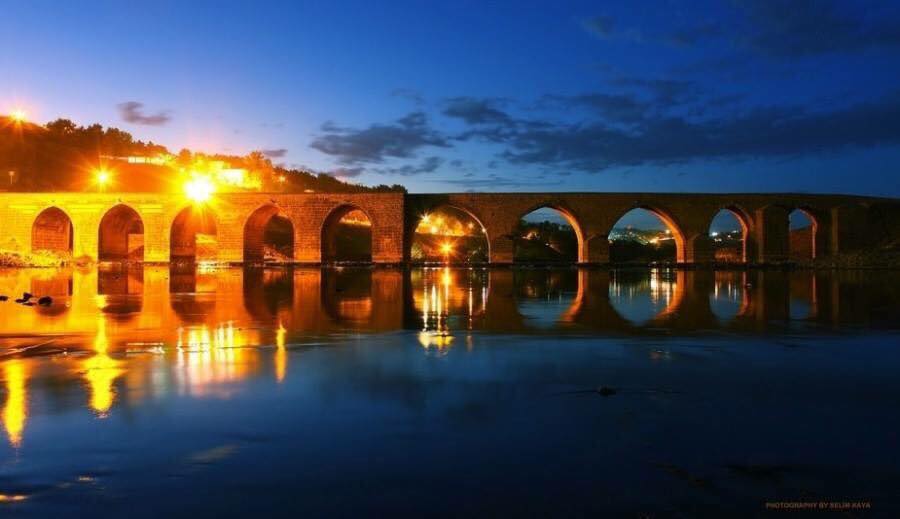Kurdshop - The Dahdari Bridge in Amed, North part of Kurdistan, which is built on the Tigris River, is known by several names such as Belak Bridge, Dehchevi Bridge, and Farqin Bridge, but the old name is Belak Bridge.
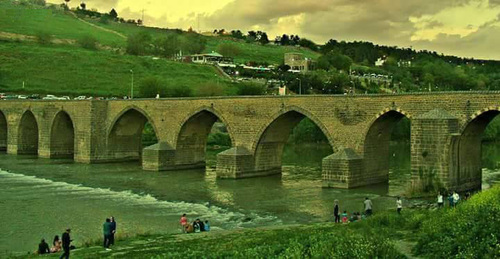
Dahdari Bridge is called Dahdari because it has ten springs of water (Dah in Kurdish means ten). The bridge is located outside the city, south of Diyarbakir, 3 kilometers from the Merdin Gate of Diyarbakir Castle. The bridge is 180 meters long and 7 to 8 meters wide. Most of it is made of smooth and dry basalt rock. The bridge has two sections; the eastern part and the western part. There is a special column between the two sections, and the column connects the two sections of the bridge. Because strong water waves come from the west side of the bridge and hit the bridge, the west side wall has been built very thick and its branches widened. Many historians, especially a historian named Karsten Niebuhr, say in his book that the Diyarbakir Bridge is as old as the city's history, but the Dahdari Bridge, which is no longer the first bridge, was built or renovated during the Kurdish state of Marwani.
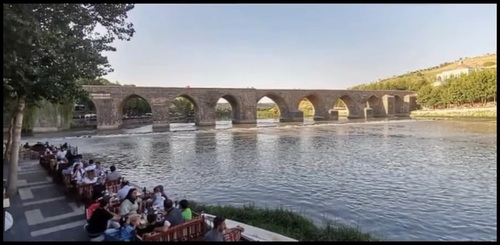
Dahdari Bridge is in front of Chil Azizan Mountain. According to some historians, it was built in 515 during the Roman Empire, and the Umayyads destroyed it in 742/743, but what is known for sure is it was rebuilt in 1065-1067 during the Kurdish kingdom of Marwan. The bridge was rebuilt by Yusuf son of Obaid Sinjari.
Historians M. Van Berchem and Albert Gabriel say that this bridge existed in ancient times, but whenever the forces wanted to surround and capture Diyarbakir, it was their main target. Therefore, any force in power in Diyarbakir destroyed the bridge and later when the offensive forces withdrew, the bridge was repaired again. In other words, in every battle over Diyarbakir, the Dahdari Bridge has become the first and main target of the enemy. In 974, when the Byzantine Emperor John I Tzimiskis laid siege to Amed, he destroyed the bridge.
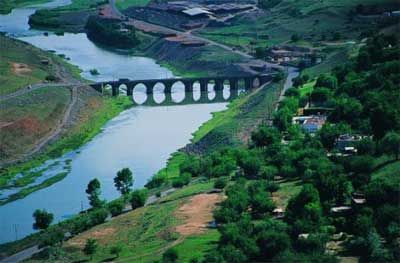
The inscription on the wall of the bridge was carved in 1065 and is still there. It says that the bridge was built by King Marwan Nizamuldawla, and the photo of the text is as follows:

The translation of the text on the bridge is as follows:
To gain God’s mercy. Our esteemed Emir, our noble, Nizamuddin, the ruler of the state, the glory of Islam (may Allah extend his reign, increase his victories, and guide him) ... ordered and paid for its construction. This was built under the responsibility of Qadi Abdul Hasan Abdul Wahid and by the master of the walls, Sajar(?)* son of Obaid, in 457**.
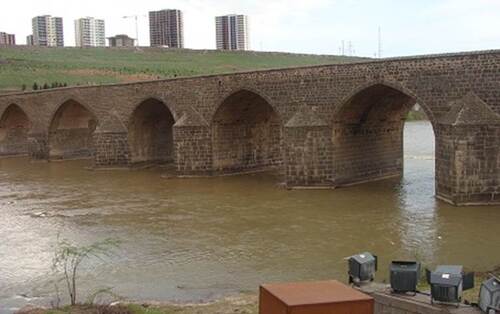
The Tigris River is sacred to the Amedi people. The people of Diyarbakir believe that the water of the Tigris flows directly to heaven and that God and his angels are in heaven. Based on this belief, women and girls in Diyarbakir write their demands, hopes, and complaints on paper and go to the Dahdari Bridge on the evening of Eid al-Adha. They begin to pray and throw their prepared letters off the bridge. According to the same belief, letters go to heaven. The letters that go with the water soon reach God and their requests and prayers are accepted.

